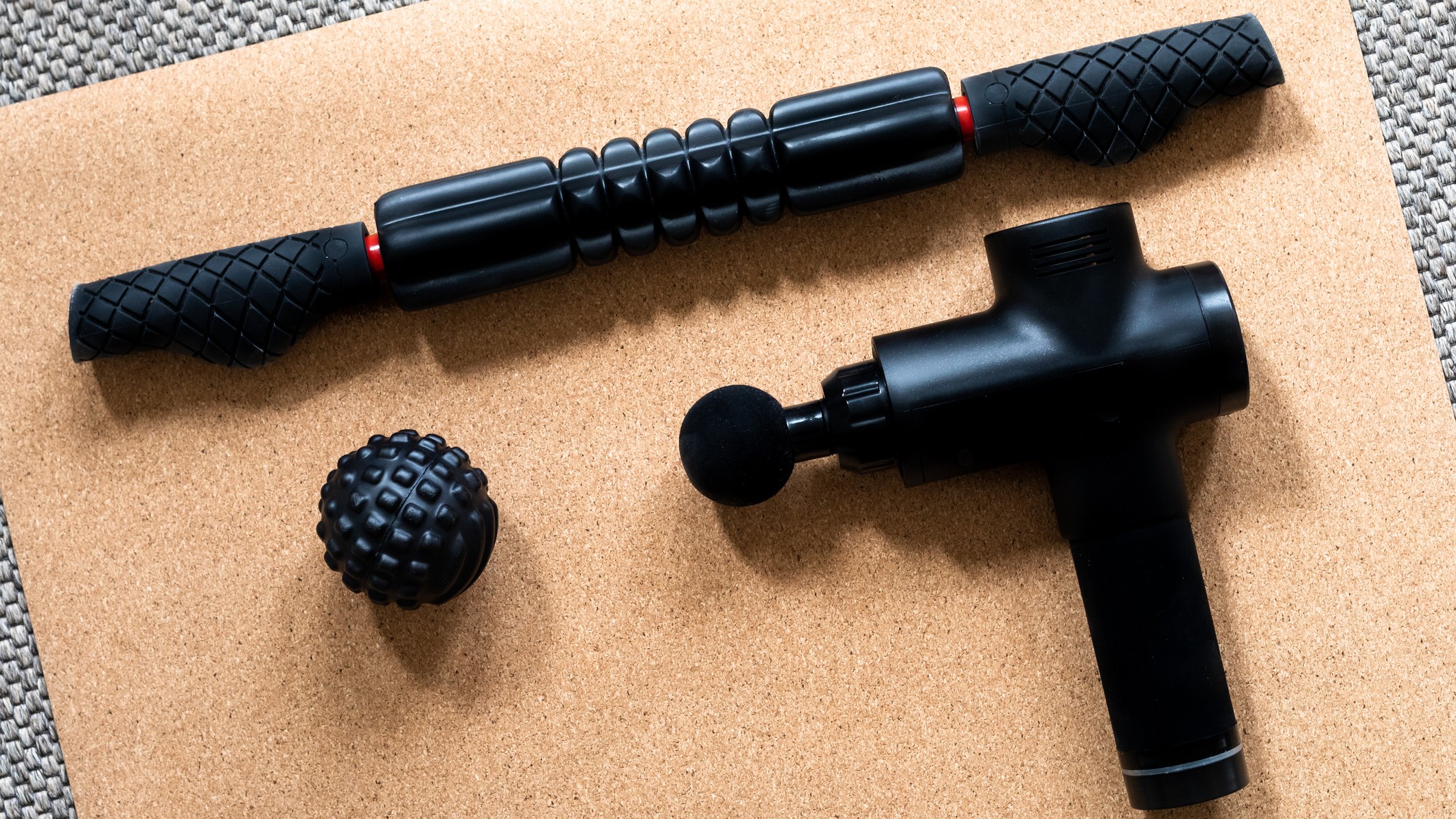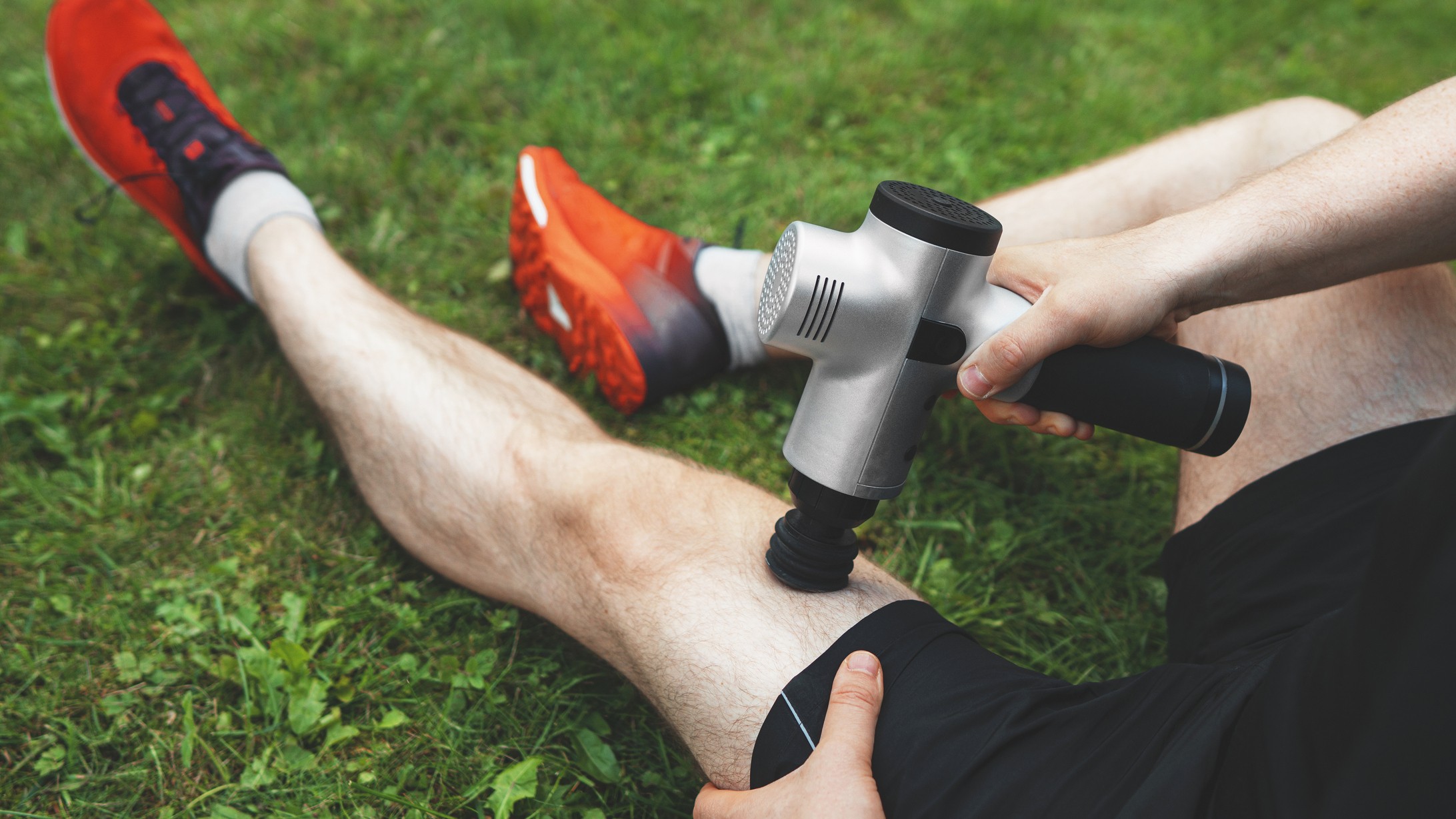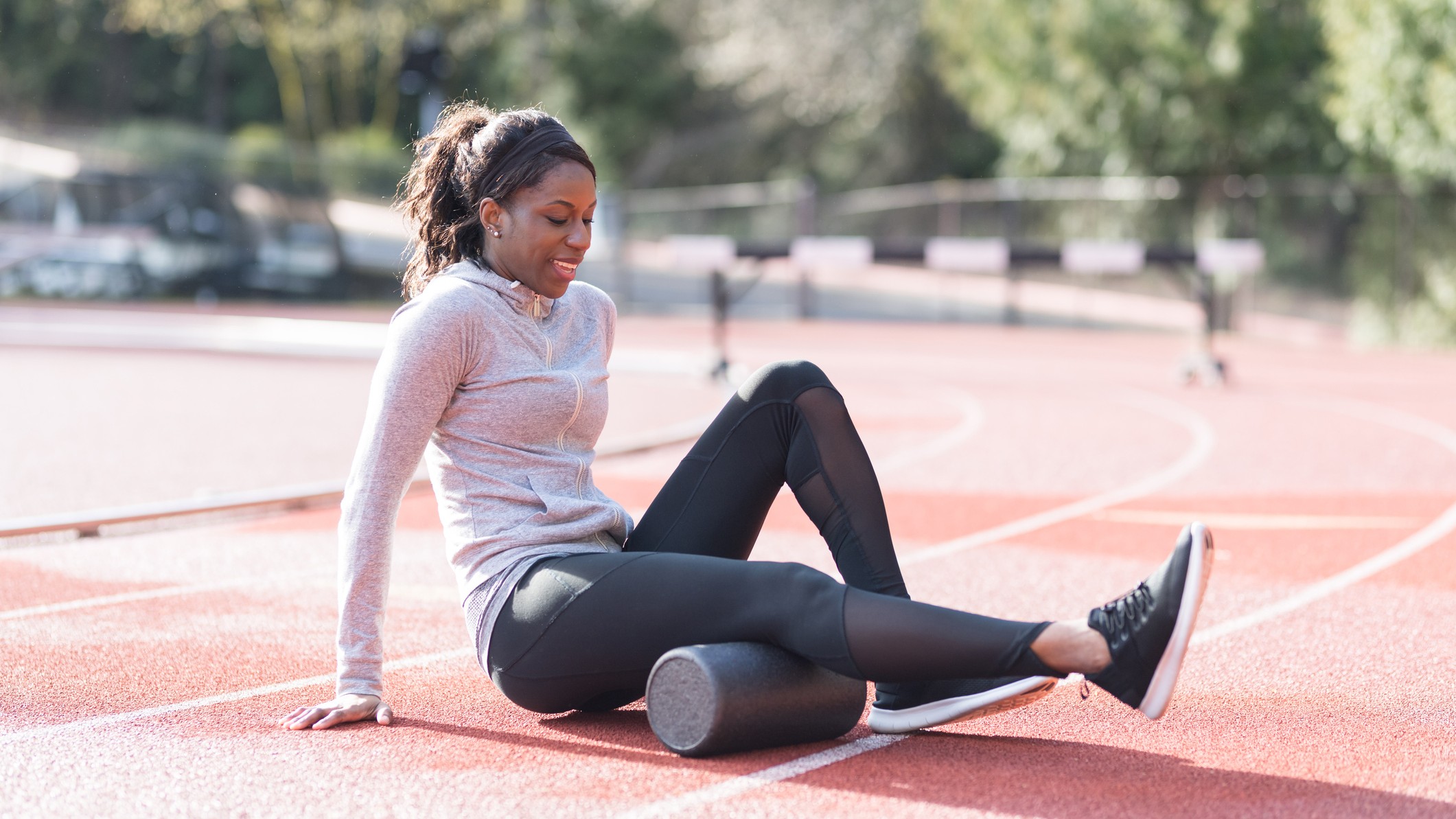
“Do you use a massage gun or foam roller?” It’s a question you’ll hear in many exercise settings, from the yoga mat to the running track. The foam roller, typically a reinforced tube with foam padding, has long been a fixture in gyms – and, lately, home gyms – and foam rolling exercises are part of any serious runner’s routine.
However, in recent years gun-shaped, percussive therapy devices have grown in popularity. The best massage guns have been heralded as capable of alleviating muscle pain, improving range of motion and accelerating recovery after exercise.
Global sports stars, including Grand Slam tennis champ Naomi Osaka and four-time major-winning golfer Rory McIlroy, have been lauding the benefits of massage guns (and are “athlete investors” in brand Hyperice), yet the less flashy foam roller is designed to deliver many of the same benefits. So, which is the best recovery tool for your next workout?
We spoke to a massage specialist and a physiotherapist for the experts’ takes on the pros and cons of massage guns and foam rollers to help you decide whether you should gun or roll.
Massage Gun Vs Foam Roller:
While massage guns and foam rollers might deliver similar physiological benefits, they do so in different ways.
“Foam rollers are similar to manual therapy in that they interact with the nervous system to send different signals to the body and brain, to relax the muscles being rolled,” says Ruth McKinnon, head of massage at London-based gym and fitness chain Ten Health & Fitness.
“When used properly – with slow and intentional movement, taking deep breaths and allowing your body to relax – the experience should feel good, which will signal to the sore area that the protective tightness in the muscle isn’t required,” says McKinnon.
Get the Coach Newsletter
Sign up for workout ideas, training advice, reviews of the latest gear and more.
By contrast, massage guns rely on the more forceful method of percussive therapy, where varying levels of pressure are rapidly and repeatedly applied to the soft tissue of a muscle. Industry leader Therabody, for example, calibrates all of its devices to fire 1,750-2,400 percussions per minute (PPM), or 40 times per second at top speed, delivering up to 60lb (27kg) of force.
“In theory, this repeated percussive motion stimulates blood flow to the area, triggering the muscles to release, so as to help with the effects of delayed onset muscle soreness [DOMS],” says McKinnon. “But from my perspective, it's just another way to interact with the nervous system to diminish pain and discomfort felt in the body.”
Massage Guns: The Benefits

Handheld massage guns are more practical than foam rollers, which typically require you to sprawl out on top of them to isolate the target area. Travel- or pocket-size massage guns, such as the Theragun Mini, are easy to carry and use at your desk or in your van, while high-powered, professional-grade models like the Theragun PRO or Hyperice Hypervolt 2 Pro have even been embraced by at-home massage providers such as Urban.
Therabody argues that massage guns can deliver all the benefits of foam rolling in a fraction of the time. The Californian company points to one 2021 study in particular, which found percussive therapy to be more efficient than foam rolling, and able to deliver the equivalent of 15 minutes of manual therapy massage in two minutes.
Nuno Henriques, a specialist musculoskeletal physiotherapist at London’s Technique Health and Fitness, which provides physiotherapy, osteopathy, and strength and conditioning services, is sceptical. “In my view, there’s no compelling evidence that massage guns provide any extra benefits beyond those offered by foam rolling,” says Henriques.
“They can be helpful to use as part of a structured warm-up and, clinically, have been shown to be effective at reducing perceived pain, increasing range of motion without affecting muscle performance and reducing DOMS. But they can’t increase muscle activation or force output, as some massage gun companies have claimed.”
McKinnon says massage guns should also be used sparingly and with caution. “They can provide pain relief for some,” she says. “However, overuse can overstimulate the area, causing the body to react to what it perceives as danger, making it tighten up further.”
Foam Rollers: The Benefits

One benefit of foam rollers over massage guns is their affordability. The most expensive device in our best massage gun round-up costs £549, compared with £188 for the Hyperice Vyper 2.0 vibrating foam roller in our best foam roller round-up. More importantly, the budget options are much more reasonably priced: the vibration-free TriggerPoint Grid Roller, one of Henriques’ top picks, costs £32.
“Foam rollers have been more extensively researched, they are proven to improve flexibility and range of motion without compromising muscle performance, and their benefits can be felt quickly,” says Henriques. A few minutes of effective rolling, targeting the lower body, can help improve your squat depth, for example.
“That said, the physiological gains from foam rolling typically only last a few minutes,” says Henriques. “So it needs to be combined with active movement and stretching to prolong its beneficial effects.”
As with massage guns, foam rollers can also cause more pain if used incorrectly, uncomfortably compressing nerve and pain receptors.
Massage Gun Vs Foam Roller: The Verdict
Massage guns are generally more expensive than foam rollers, but also more practical and versatile. A foam roller, however, given its lower price, is less likely to become a regrettable purchase if you barely use it. So, while the scientific jury may still be out on these recovery tools, our experts agree personal preference should decide the winner.
“It will always depend on the individual,” says Henriques. “Personally, I would go for a foam roller as the research is inconclusive on massage guns, yet the benefits are similar. But if you’re more likely to use a massage gun consistently, then it will be more beneficial for you long term.”
McKinnon goes further. “I’d always recommend a foam roller,” she says. “There is less chance of it being used incorrectly and you can adapt how you use it, by staying static on a pressure point or moving dynamically over the muscle, whereas massage guns only offer one type of percussive treatment.”
The claims some massage gun companies make, she says, are also often based on limited trials and case studies. “Like anything, they will work wonders for some but not all. It’s very subjective, so don’t rely on them alone to improve your health or performance.”

Sam Rider is an experienced freelance journalist, specialising in health, fitness and wellness. For over a decade he's reported on Olympic Games, CrossFit Games and World Cups, and quizzed luminaries of elite sport, nutrition and strength and conditioning. Sam is also a REPS level 3 qualified personal trainer, online coach and founder of Your Daily Fix. Sam is also Coach’s designated reviewer of massage guns and fitness mirrors.
